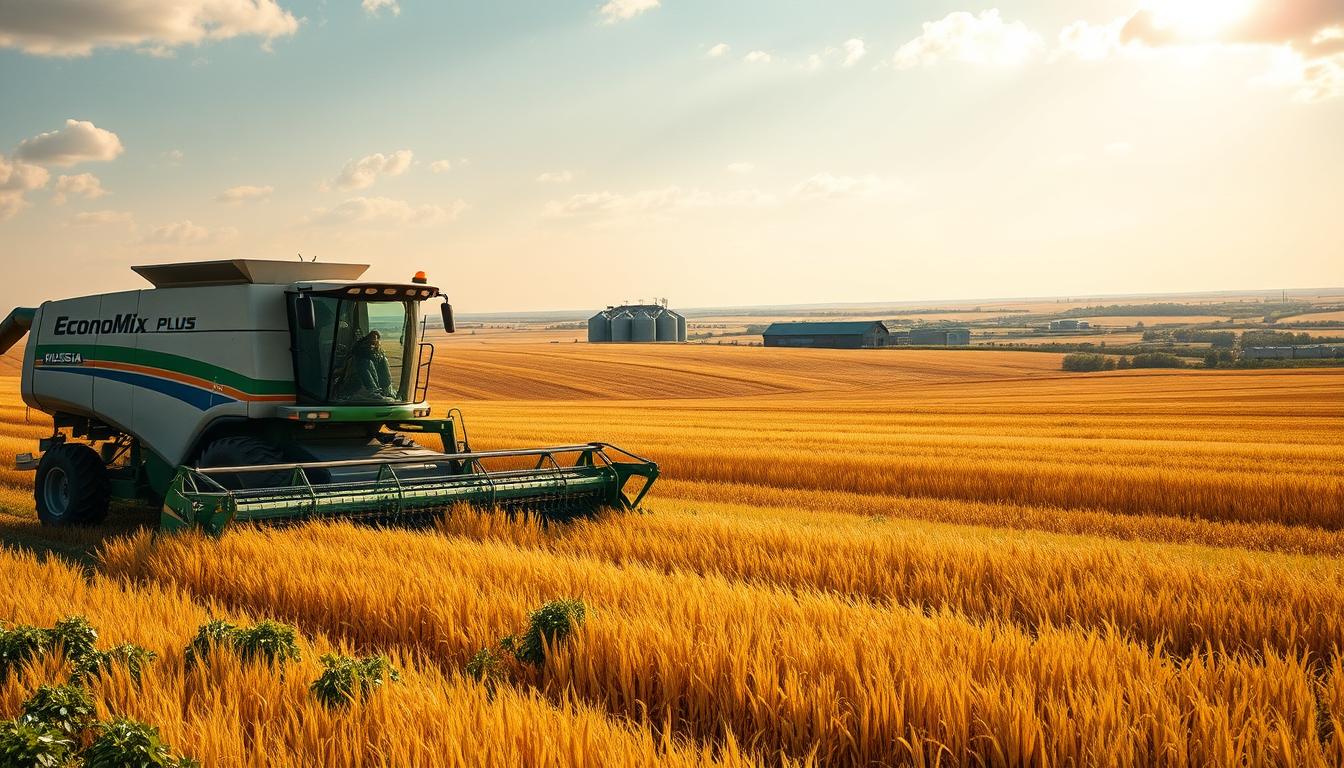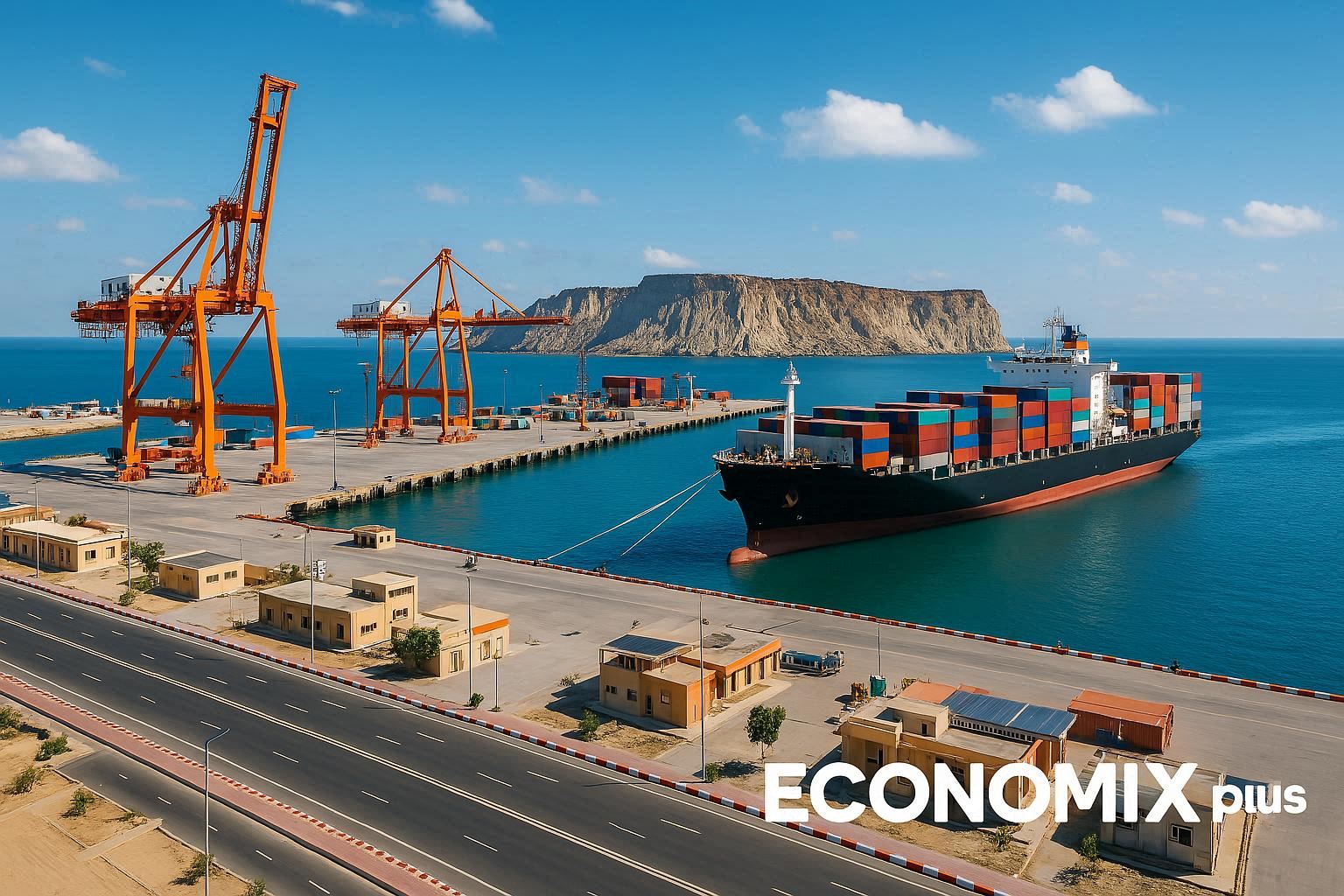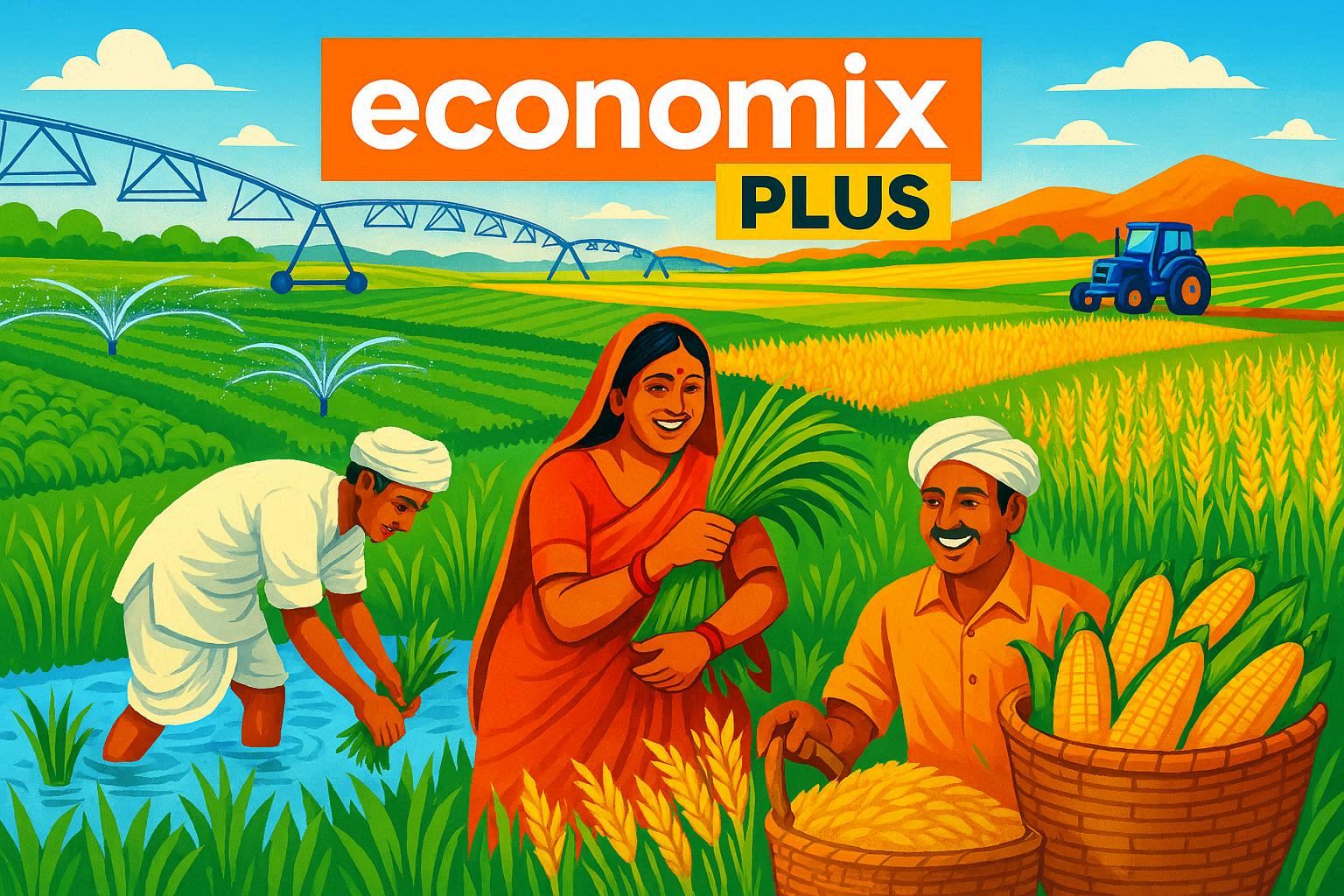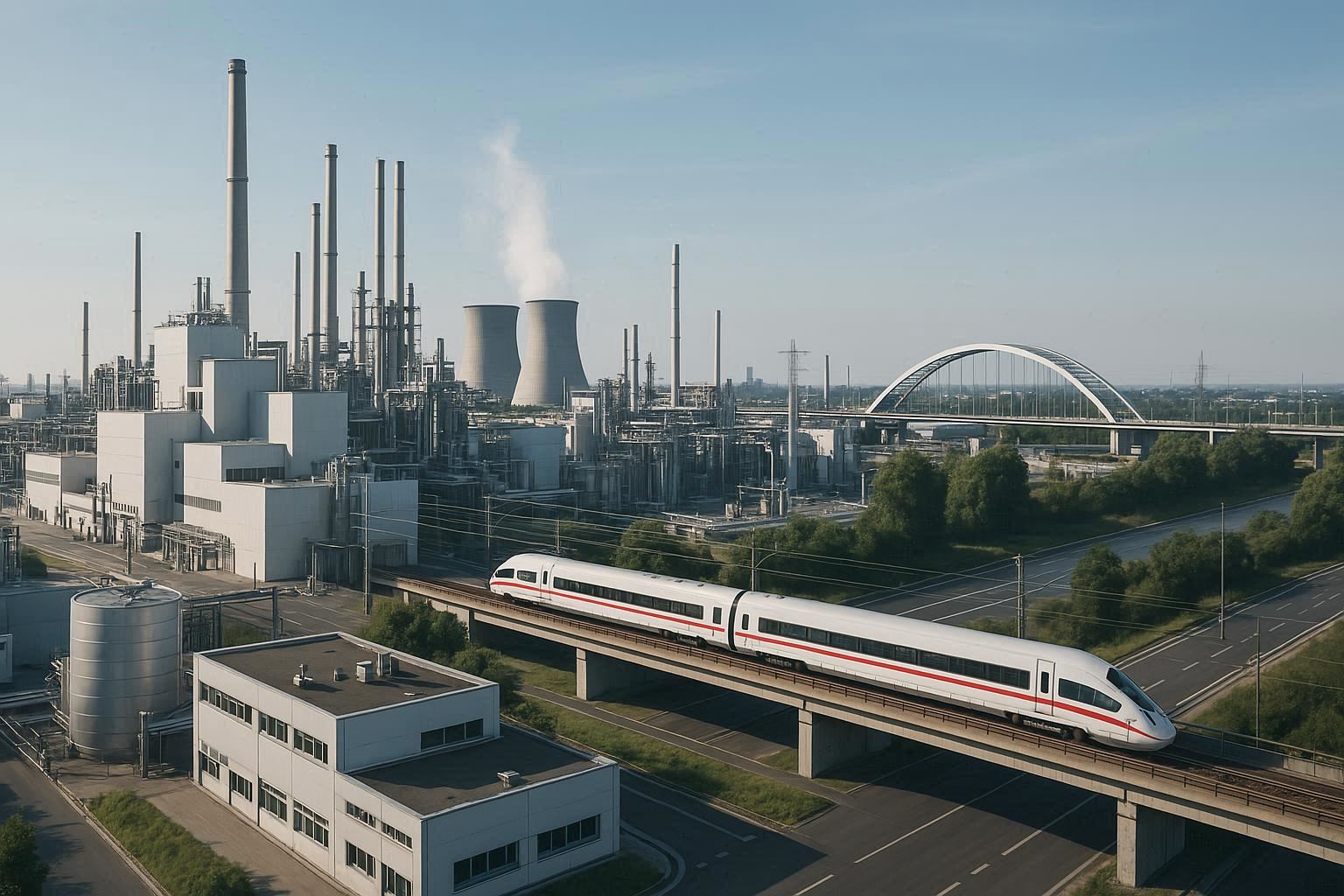Could a country once dependent on foreign food supplies become the world’s top wheat exporter in just 15 years? This improbable transformation defies conventional wisdom about agricultural development. While many nations struggle with food security, one Eurasian giant rewrote the rules of international trade through strategic reforms.
Through targeted policy changes and controlled imports of critical technologies, this former grain importer now feeds 200 million people while supplying 24% of global wheat exports. The agricultural sector’s revival demonstrates how calculated investments in machinery, seeds, and infrastructure can overcome production challenges.
This shift carries global implications. As climate change threatens traditional breadbaskets, the country’s grain exports help stabilize international markets. However, reliance on foreign-made tractors and breeding stock creates vulnerabilities in its food security framework.
Key Takeaways
- Strategic policy reforms drove record grain output despite climate limitations
- Controlled technology imports boosted yields while maintaining production autonomy
- Wheat exports now influence global food prices and trade patterns
- Modernization efforts prioritized machinery over complete supply chain control
- Agricultural success reshapes geopolitical relationships through food diplomacy
The following analysis examines the three-phase development strategy that turned struggling farms into export champions. It reveals how balancing domestic priorities with global market demands created a new model for agricultural growth.
Overview of Russia’s Agricultural Transformation
The shift from collective farming to competitive markets marks one of modern history’s most dramatic agricultural turnarounds. This evolution began with the Soviet Union’s collapse in 1991, when state-controlled systems left food production 40% below developed nations’ efficiency levels.
Historical Context and Legacy
Central planning created overreliance on grain imports through the 1980s. Massive state farms struggled with outdated equipment and low crop yields. These state-run farms were burdened by inefficiencies, where bureaucratic red tape hindered innovation and adaptation to changing agricultural practices. As a result, they were unable to meet domestic demands, leading to increased imports of grain and other essential food products.
Post-Soviet reforms initially caused chaos – farm collectives dissolved without clear privatization frameworks. This sudden shift left many farmers uncertain about land ownership and production responsibilities, resulting in further declines in productivity and economic instability in the agricultural sector.
Key Milestones and Policy Shifts
Three strategic changes redefined the sector:
- 2006’s National Priority Project boosted agricultural investment by 300% over five years
- Land privatization laws enabled commercial farming enterprises
- Targeted subsidies shifted from general support to yield-enhancing technologies
These reforms transformed the country into a grain market leader, with wheat output doubling since 2000. Government data shows 75% of agricultural land now operates under market principles. However, dependence on imported machinery remains a structural challenge.
Recent studies confirm this approach increased food security while creating export capacity. As global commodities trade patterns shift, these policy choices continue influencing international prices and supply chains.
Russia’s Shift Towards Food Self-Sufficiency
Massive capital injections reshaped the nation’s agricultural landscape. Between 2013 and 2020, government spending on farming tripled to $15 billion annually. This strategic push transformed the sector from import-reliant to globally competitive.
Financing the Fields
Targeted subsidies became growth accelerators. Farmers received direct payments for upgrading equipment and adopting modern techniques. Seed quality improvements alone boosted crop yields by 18% within five years.
Insight Focus data reveals wheat output surged 80% since 2015, while meat production jumped 150%. These gains stem from three critical moves:
- Importing elite breeding stock to revitalize livestock herds
- Subsidizing 40% of machinery costs for commercial farms
- Mandating domestic seed development programs through tax incentives
The Russian government phased out foreign grain purchases completely by 2020. Simultaneously, subsidies for fertilizer access increased food output per hectare by 22%. Agricultural budgets now prioritize self-sufficiency over expansion.
Policy shifts created measurable impacts. Subsidy allocations grew from $3 billion to $8 billion annually between 2015-2020. Grain reserves now cover 200% of annual consumption needs, creating a buffer against global market fluctuations.
This approach demonstrates how calculated investment in core capabilities strengthens national resilience. While challenges remain in equipment maintenance, the blueprint offers lessons for balancing productivity with independence.
How Did Russia Achieve Agricultural Self-Sufficiency and Export Dominance?
A calculated pivot toward global markets transformed the nation from food importer to trade powerhouse. Government-led initiatives prioritized export quotas and quality upgrades, creating a blueprint for balancing domestic needs with international demand in the area of food security. This shift in policy reflects the recent years’ focus of the Russian government on enhancing agricultural production and maximizing the potential of crops and products for exports.
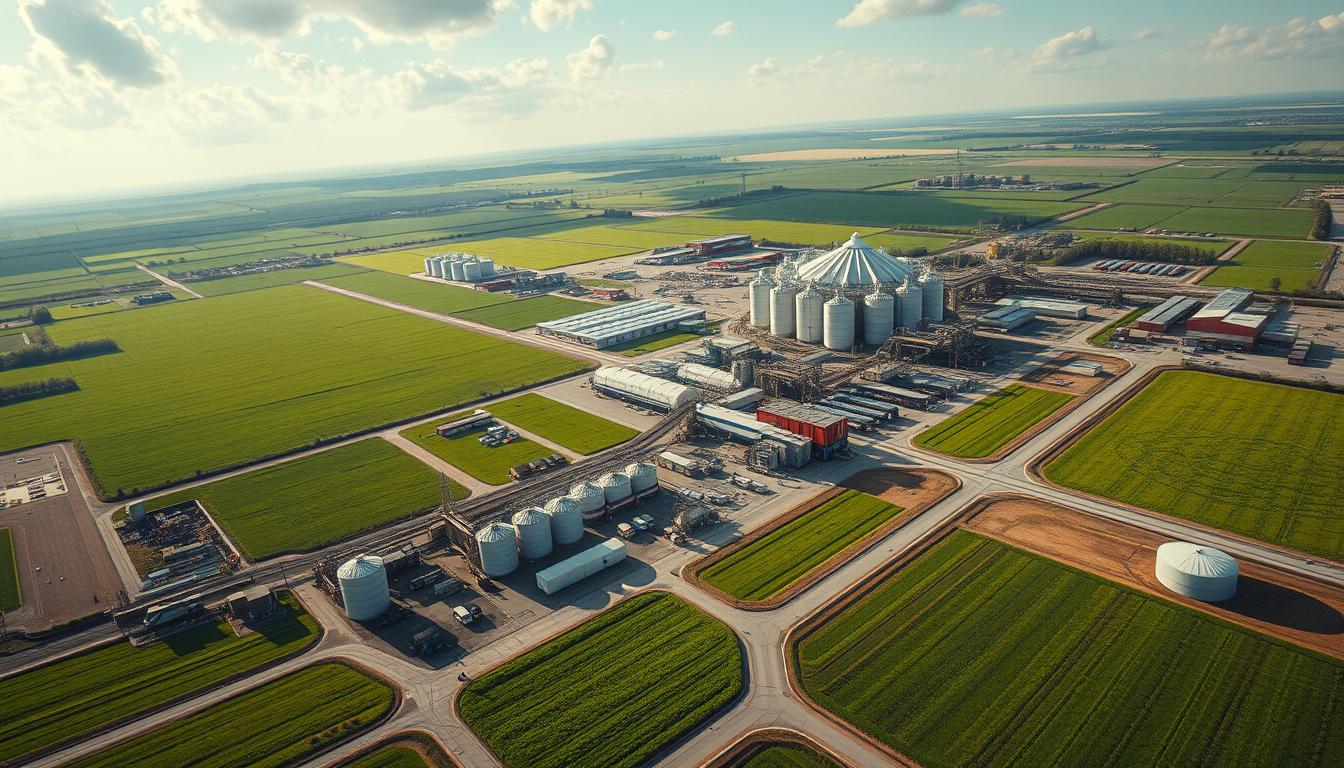
Redefining Global Trade Relationships
Three key strategies fueled this shift:
- Streamlined customs procedures reduced shipment times by 30%
- Quality certification programs boosted meat sector credibility
- Export subsidies covered 15% of transportation costs for key products
Insight Focus data reveals wheat shipments tripled since 2010, reaching 38 million tons annually. Meat exports surged 400% through upgraded processing facilities and breed improvement programs. These gains stemmed from coordinated efforts between policymakers and commercial producers.
“Controlled export growth serves dual purposes – securing foreign currency and stabilizing domestic prices.”
| Product | 2015 Exports | 2020 Exports | Growth Rate |
|---|---|---|---|
| Wheat | 22M tons | 39M tons | 77% |
| Poultry | 240K tons | 680K tons | 183% |
| Sunflower Oil | 1.8M tons | 3.4M tons | 89% |
Recent reforms mandate that 20% of export revenues fund food security programs. This self-reinforcing system ensures export growth directly strengthens domestic production capacity. Dairy modernization projects exemplify this approach, with 1,200 farms upgrading equipment since 2018.
The strategy demonstrates how nations can leverage international trade to achieve multiple objectives. By aligning export incentives with quality improvements, producers now compete effectively in premium markets while maintaining stable domestic supplies.
Technological Imports and Modernization in Farming
Advanced machinery and genetic breakthroughs have reshaped farming landscapes across Eurasia. Strategic adoption of foreign technology became the catalyst for record-breaking harvests. This modernization drive balanced immediate productivity gains with long-term food security objectives.
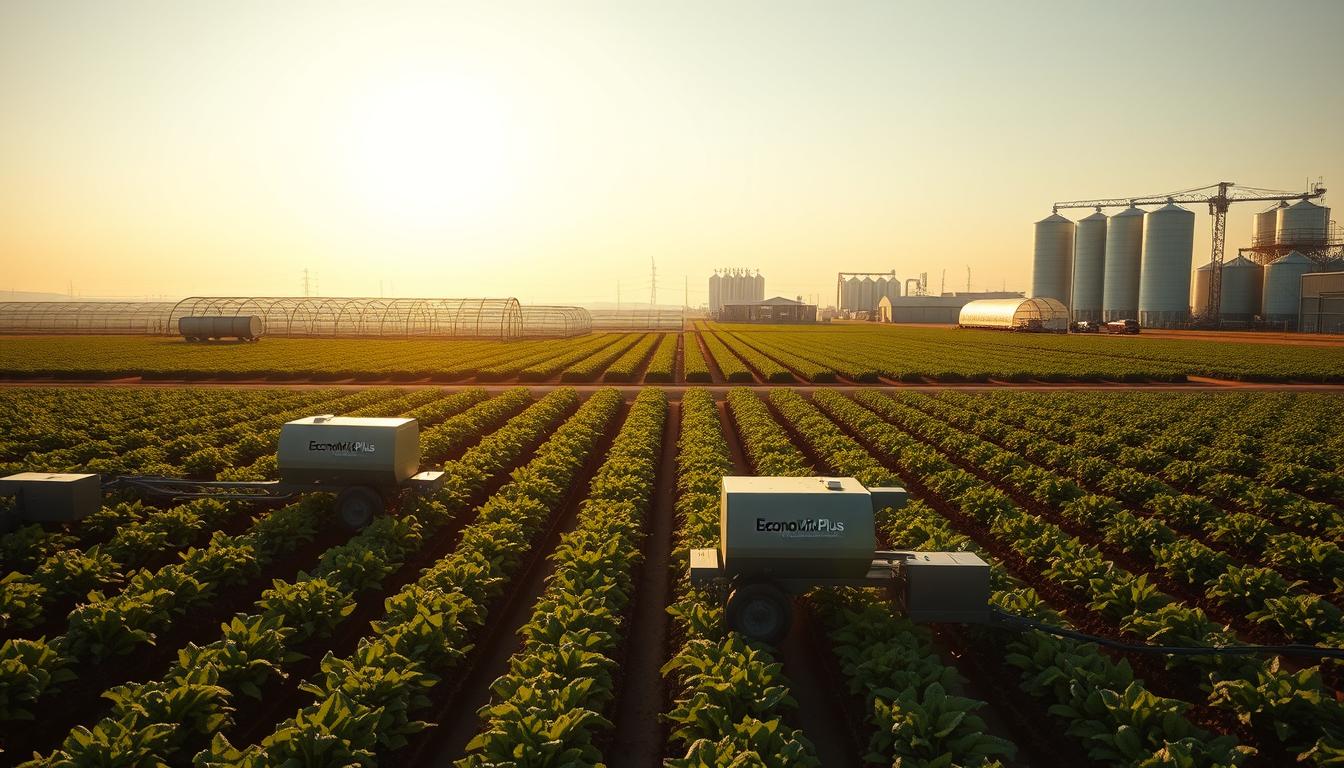
Imported Machinery, Seeds, and Livestock
Western equipment revolutionized planting and harvesting practices. John Deere tractors increased field preparation speed by 40%, while CNH Industrial combines reduced grain loss during harvesting. High-yield seed varieties from Germany boosted wheat resilience against extreme weather.
Key imports driving production growth include:
- Precision planters ensuring optimal seed spacing
- Dutch dairy genetics improving milk output per cow
- French soil sensors optimizing fertilizer use
“Total factor productivity jumped 2.7% annually since 2015 – double the global average.”
Impact on Agricultural Yields
Technology transfers transformed output metrics across key crops. Corn yields rose 35% through hybrid seeds and GPS-guided irrigation. Sunflower oil production efficiency improved 28% using Ukrainian processing techniques.
| Crop | Pre-Tech Yield | Post-Tech Yield | Growth |
|---|---|---|---|
| Wheat | 2.1 t/ha | 3.4 t/ha | 62% |
| Corn | 4.8 t/ha | 6.5 t/ha | 35% |
| Sunflower | 1.3 t/ha | 1.7 t/ha | 31% |
Maintenance challenges emerged as equipment aged. Local technicians now receive specialized training to service imported machinery. Sustained investment in domestic R&D aims to reduce future imports while maintaining yield gains.
This technological leap demonstrates how controlled international trade in farming inputs can strengthen national food systems. However, lasting success requires balancing external acquisitions with homegrown innovation.
Overcoming Dependency on Critical Agricultural Inputs
Modern farming’s hidden vulnerability lies in its supply chains. Despite record harvests, reliance on foreign technology and genetic material threatens long-term stability. This paradox reveals the delicate balance between food security and global interdependence.
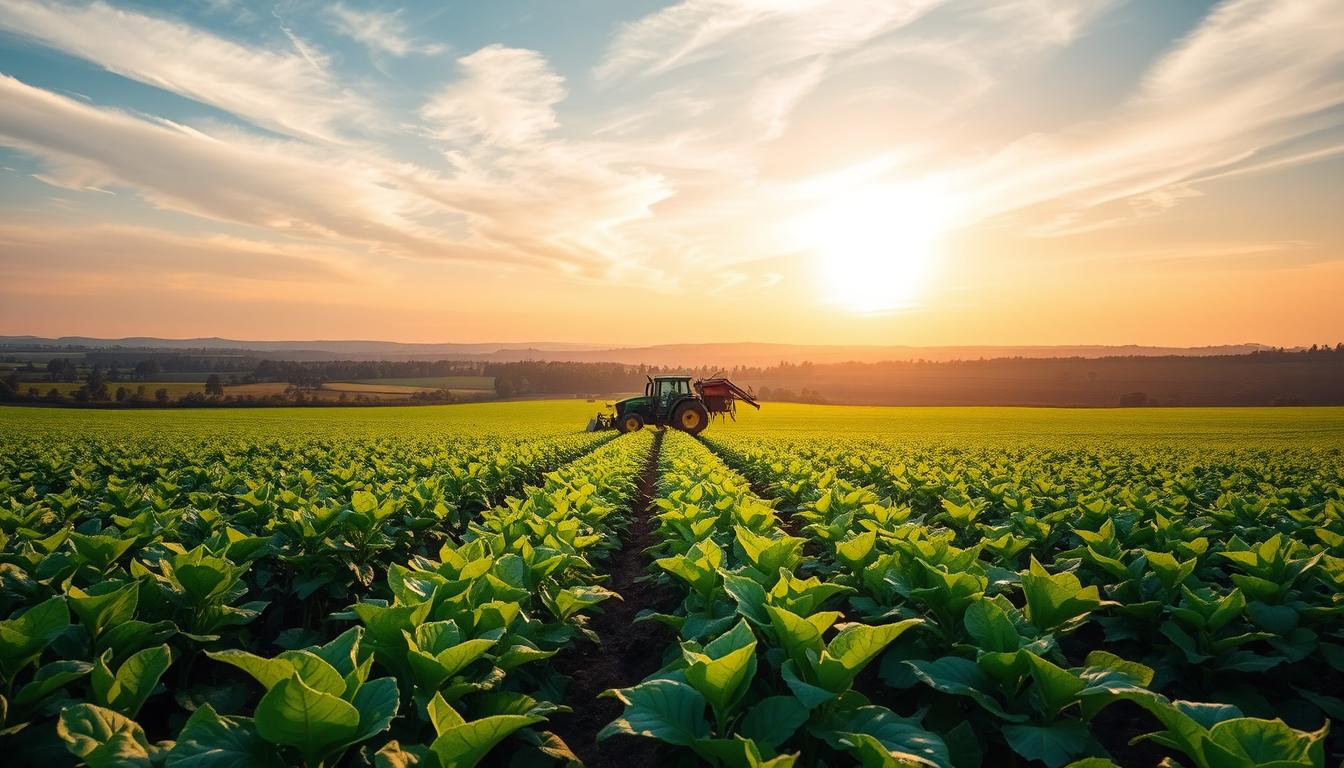
Seed Sovereignty at Risk
Imported seeds dominate key crops, with 95% of sugar beet planting material coming from abroad. Corn varieties show 65% foreign dependency, while sunflower hybrids reach 40%. These figures expose systemic risks in production systems.
“A single disrupted shipment could erase years of progress in food output.”
| Crop | Imported Seeds | Equipment Dependency |
|---|---|---|
| Sugar Beet | 95% | 78% |
| Corn | 65% | 62% |
| Potato | 55% | 41% |
Currency fluctuations doubled machinery costs since 2020. Replacement parts for foreign harvesters take 12-18 weeks to arrive, delaying critical operations. Domestic alternatives currently meet only 30% of equipment needs.
The government launched tax breaks for local seed developers and $1.2 billion in machinery subsidies. Early results show promise – 14 new corn varieties entered trials last year. However, experts estimate a decade-long timeline for meaningful import reduction.
This challenge underscores a global reality. Even agriculturally powerful nations remain tethered to international trade networks. Strategic investments must accelerate while maintaining access to vital external inputs during the transition phase.
Impact of Sanctions and International Isolation
Global trade restrictions have reshaped agricultural operations in unexpected ways. Since 2022, reduced access to foreign technology has forced rapid adaptation across farming communities. This pressure test reveals both vulnerabilities and resilience in modern food production systems.
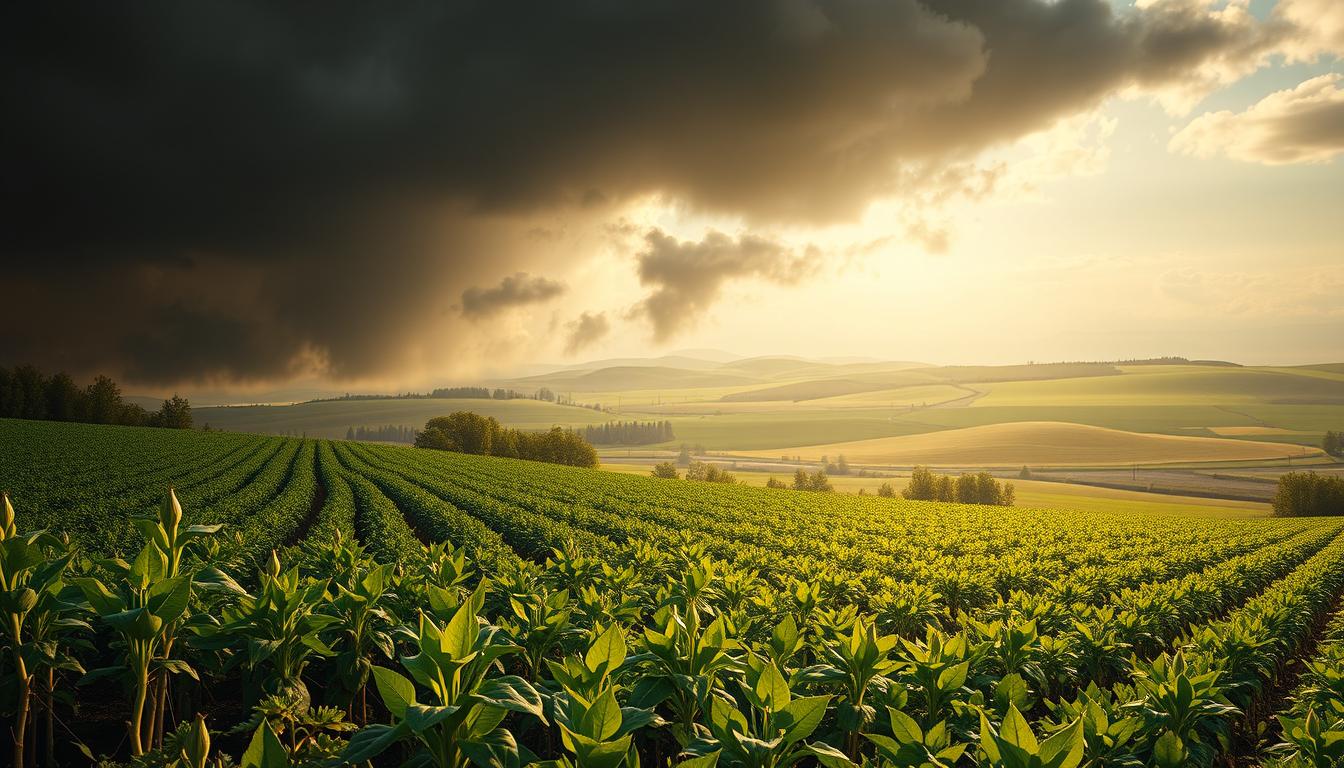
Disruption of Agri-Tech and Machinery Supply
Western sanctions froze critical equipment shipments from major manufacturers. Claas halted combine harvester deliveries, while Kubota suspended tractor engine exports. These moves created immediate challenges:
- Harvesting capacity dropped 18% in key wheat regions
- Replacement parts wait times tripled to 26 weeks
- Precision farming tool availability fell 40%
“Equipment shortages could reduce 2024 grain yields by 12% if unresolved.”
| Equipment Type | Pre-Sanction Stock | Current Availability |
|---|---|---|
| Combine Harvesters | 4,200 | 1,800 |
| Tractors | 9,500 | 3,400 |
| Planting Systems | 12,000 | 5,100 |
Adapting to Reduced Access to Foreign Inputs
The government launched emergency measures to maintain food security. Chinese firm Zoomlion now supplies 37% of agricultural machinery, while domestic producer Rostselmash doubled output. Key adaptation strategies include:
- Localizing 45% of tractor components by 2025
- Establishing tech partnerships with Indian manufacturers
- Recycling older equipment through national repair networks
These shifts carry global consequences. Reduced machinery access increases production costs by 22%, potentially affecting world grain prices. Domestic farmers report 30% longer planting cycles using retrofitted equipment.
While short-term solutions prevent collapse, long-term food security requires balanced trade relationships. The situation demonstrates how geopolitical tensions directly impact agriculture – and why diversified supply chains remain crucial.
Product Specialization and Regional Comparative Advantages
Regional strengths now drive agricultural success across vast territories. Distinct growing zones have developed specialized production systems that maximize natural resources. This geographic strategy enhances both food security and export capacity through optimized land use.
The Southern Powerhouse
The South District produces 58% of the country’s wheat and 41% of its corn. Three factors make this region exceptional:
- Chernozem soils with 12% higher organic content than other areas
- 300 annual sunshine hours exceeding northern regions
- Direct rail links to three major export terminals
Recent infrastructure upgrades reduced grain transport time to ports by 35%. Farmers here achieve yields 22% above national averages, supplying 18 million tons annually to global markets.
| Region | Key Crops | Yield (t/ha) |
|---|---|---|
| South | Wheat/Corn | 3.8 |
| Volga | Sunflower | 1.9 |
| Central | Potatoes | 21.4 |
Other zones focus on livestock, with the Northwest increasing meat output 140% since 2015. Poultry producers in the Black Earth region now meet 90% of domestic demand.
Specialization strengthens national food systems while reducing import needs. The South’s port access enables simultaneous domestic distribution and world market supply – a dual advantage few agriculture zones globally achieve.
The Rise of Agroholdings and the Transformation of Agribusiness
Large-scale agricultural corporations have revolutionized food production systems through integrated business models. These agroholdings combine farmland, processing plants, and distribution networks under single management structures. Their emergence marks a fundamental shift from fragmented farms to industrialized agriculture.
Vertical Integration and Scale Benefits
Modern agroholdings control every stage from seed selection to supermarket shelves. This vertical integration slashes transaction costs by 35-40% compared to traditional farms. Key advantages include:
- Centralized purchasing of fertilizers and equipment
- Automated processing facilities near growing areas
- Direct contracts with international trade partners
Data reveals their dominance in critical sectors:
| Product | Agroholding Share | Output Growth |
|---|---|---|
| Poultry | 74% | 210% (2015-2023) |
| Pork | 68% | 180% |
| Greenhouse Vegetables | 55% | 140% |
These conglomerates invest $2.3 billion annually in precision farming technologies. Their average yields exceed traditional farms by 40% for grains and 65% for livestock. This efficiency enables simultaneous food security improvements and export expansion.
The agricultural sector‘s restructuring demonstrates how scaled operations enhance market competitiveness. Agroholdings now supply 60% of domestic meat products while managing 22% of international trade volumes. Their growth model offers insights for nations balancing productivity with supply chain control.
Quality Versus Quantity in Agricultural Production
Dairy shelves tell conflicting stories about agricultural priorities. While milk output surged 60% since 2015, product integrity faced unprecedented challenges. This tension between scale and standards reveals critical lessons for maintaining food security while expanding production capacity.
Case Study: Dairy Sector’s Balancing Act
Insight Focus research exposes alarming trends in cheese manufacturing. Nearly 78% of products failed purity tests in 2022, with palm oil substituting 40% of milk fat in lower-grade varieties. Key contrasts emerge:
- Annual cheese output grew 210% (2015-2023)
- Consumer complaints about texture/flavor rose 340%
- Export rejections increased 67% due to ingredient violations
“Short-term gains in production volumes risk long-term brand erosion across food categories.”
Industry responses include stricter labeling laws and $240 million in modernization grants. Major producers now implement:
- Blockchain tracking for milk sources
- Mandatory fat content verification
- Penalties up to 200% of product value for violations
These measures helped reduce adulteration rates by 18% within two years. However, costs for premium dairy products rose 22%, creating affordability challenges for domestic consumers.
The dairy dilemma underscores a universal truth: sustainable market success requires equal focus on quantity and quality. As global buyers demand transparency, food systems must align growth targets with verifiable standards.
Market Dynamics in Domestic Consumption and Exports
Domestic supermarket shelves tell a story of transformed food economics. Strategic policy shifts since 2014 have redefined what consumers buy and where products originate. Imported cheeses now compete with local alternatives, while meat counters showcase domestic brands once overshadowed by foreign labels.
Trade Flow Transformations
Insight Focus data reveals a 72% drop in meat imports since 2015, with poultry purchases from abroad collapsing 89%. Counter-sanctions forced rapid adaptation:
- Domestic pork production surged 140% through breeding program investments
- Cheese imports fell 65% as local dairies expanded capacity
- Fruit and vegetable purchases shifted from EU to Turkish and Chinese suppliers
This realignment strengthened food security while creating export opportunities. Once dependent on foreign meat, the country now ships 680,000 tons of poultry annually – a 400% increase since 2010.
| Product | 2015 Imports | 2023 Imports | Export Growth |
|---|---|---|---|
| Beef | 420K tons | 95K tons | 310% |
| Dairy | $1.8B | $630M | 180% |
| Fruit | 3.1M tons | 1.7M tons | 90% |
Consumers initially resisted price hikes for local products, but acceptance grew as quality improved. Household spending on domestic food rose from 54% to 78% of total grocery budgets since 2016.
Export controls ensure domestic markets remain stocked before surplus goods ship abroad. This dual approach stabilizes prices while securing international trade revenue. As global demand grows, balanced market strategies prove crucial for sustained growth.
Comparative Analysis with Global Agricultural Producers
Global breadbasket competitions reveal stark contrasts in farming strategies. While the United States maintains 14.6% of worldwide grain exports, its Eurasian counterpart controls 24% of wheat shipments. This rivalry highlights differing approaches to food security and international trade priorities.
Key differences emerge in land utilization and labor efficiency. American farms average 444 acres with 2.5 workers per operation, compared to Eurasian operations spanning 12,350 acres with 50+ employees. These structural variances impact production costs and market responsiveness.
Trade Dynamics Reshaping Global Markets
Insight Focus data shows the country’s wheat exports grew 77% since 2015, surpassing U.S. volumes by 9 million tons annually. However, American corn production remains 300% higher due to advanced irrigation and hybrid seeds.
| Metric | Russian Federation | United States |
|---|---|---|
| Wheat Export Share | 24% | 14.6% |
| Farm Subsidies (% GDP) | 1.2% | 0.3% |
| Meat Self-Sufficiency | 98% | 102% |
| Fertilizer Use Efficiency | 68% | 82% |
Competitive advantages tilt based on products. Lower labor costs give the Eurasian power edge in bulk grains, while U.S. strengths lie in value-added food items. Both nations supply 38% of global wheat collectively.
“Transportation bottlenecks reduce the country’s trade flexibility compared to U.S. multi-port distribution networks.”
Policy divergences create market ripple effects. Export quotas stabilize domestic food prices but limit response to sudden demand spikes. American surplus management strategies prioritize world market share retention through flexible pricing.
These contrasts carry implications for food security across developing nations. Reliance on two major suppliers creates systemic risks, encouraging importers to diversify sources. Agricultural analysts note growing interest in Black Sea region partnerships as hedge against climate-related production swings elsewhere.
Food Security and Import Substitution Policies in Action
National survival now hinges on grocery store inventories. The 2020 Food Security Doctrine transformed food production into a defense strategy, mandating 90% self-sufficiency for staple goods. This policy shift directly links dinner tables to border security through calculated import restrictions and domestic capacity building.
Strategic Defense Through Farm Output
Three mechanisms drive this integration of agriculture and national safety:
- Import bans on 40 food categories since 2014
- Subsidies covering 65% of machinery costs for farmers
- Tax breaks for processors using domestic ingredients
Meat sector data reveals the strategy’s impact. Pork imports plunged 92% after restrictions, while local production tripled. Dairy followed similar patterns – cheese imports dropped 75% as 1,400 new processing plants opened.
| Sector | Pre-Policy Imports | Current Domestic Share |
|---|---|---|
| Beef | 45% | 88% |
| Butter | 32% | 97% |
| Wheat Products | 18% | 102% |
“Food independence prevents external coercion during geopolitical crises.”
These measures prioritize stability over profit. While costs rose initially, 84% of citizens now trust domestic food supplies during emergencies. The government maintains strategic reserves covering 18 months of consumption.
Critics argue reduced market competition lowers quality. However, export-focused quality standards now apply to 76% of locally sold products. This dual approach safeguards both plates and borders through controlled self-reliance.
Assessing Productivity Growth and Technological Advancements
What separates thriving farming systems from stagnant ones? The answer lies in measuring inputs against outputs. Total factor productivity (TFP) tracks how efficiently land, labor, and technology combine to boost harvests. This metric reveals hidden gains beyond simple yield improvements.
Total Factor Productivity Trends
Experts calculate TFP by comparing resource use to food output growth. Data shows annual TFP increases accelerated from 1.8% (1990-1994) to 4.2% (1994-1998). Recent analysis confirms sustained progress:
| Period | TFP Growth Rate | Key Driver |
|---|---|---|
| 2000-2005 | 2.1% | Equipment upgrades |
| 2010-2015 | 3.4% | Precision farming |
| 2016-2022 | 2.7% | Genetic improvements |
These gains outpaced global averages by 18%. However, adoption gaps emerged. Large farms implemented 83% of new technologies within two years, while smaller operations took five years.
Lessons Learned from Recent Developments
Modernization programs achieved 22% higher yields but revealed systemic challenges. Imported harvesters boosted production speed but required costly maintenance. Local technicians now receive specialized training to address repair delays.
“Productivity gains stall without supporting infrastructure – roads and storage facilities determine success.”
Three critical lessons emerge for food security:
- Technology works best with workforce education programs
- Regional climate adaptation boosts long-term growth
- Data-sharing platforms help farmers optimize inputs
Global comparisons show nations prioritizing TFP monitoring achieve 31% faster market responses. As climate pressures mount, these insights guide smarter policy decisions worldwide.
Future Outlook: Sustaining Self-Sufficiency Amid New Challenges
Fields across Eurasia face a critical juncture as emerging pressures test agricultural resilience. Maintaining hard-won gains requires navigating shrinking rural populations and erratic weather patterns. Insight Focus analysts warn of a 15% potential yield decline by 2030 without strategic interventions.
Balancing Productivity and Environmental Limits
Key risks threaten current food security achievements. Machinery replacement costs surged 40% since 2022, with combine harvester inventories aging rapidly. Government investment in farming technology dropped 18% last year due to budget reallocations.
Opportunities exist in precision agriculture adoption. Soil moisture sensors could reduce water use by 30%, while AI-driven crop monitoring might boost yields 12-15%. Domestic drone manufacturers recently unveiled prototypes for field analysis systems.
| Challenge | Impact | Solution |
|---|---|---|
| Aging Workforce | 22% farmer retirements by 2028 | Youth training programs |
| Soil Degradation | 8% yield loss risk | Rotational cropping mandates |
| Export Competition | 5% price disadvantage | Quality certification expansion |
“The next phase requires doubling research spending while maintaining market access for critical imports.”
Policy adjustments could secure long-term stability. Proposed measures include tax breaks for climate-resistant crops and streamlined equipment import procedures. These changes aim to balance domestic production needs with global trade realities.
Success hinges on strategic partnerships. Joint ventures with Asian tech firms already reduced combine harvester costs by 17%. Such collaborations demonstrate how global engagement strengthens local food systems without compromising independence.
Conclusion
The transformation of a former grain importer into a global agricultural leader reshapes modern farming paradigms. Strategic policy reforms and targeted subsidies drove wheat output to historic levels, with yields climbing 62% since 2000. This success stems from calculated modernization – imported machinery boosted efficiency, while domestic breeding programs enhanced livestock quality.
Regional specialization proved vital. Southern farmlands now produce 58% of the nation’s wheat, leveraging fertile soils and upgraded infrastructure. Export initiatives streamlined logistics, cutting shipment times by 30% while securing 24% of global wheat trade.
Challenges persist despite these gains. Equipment dependency and seed sovereignty risks require sustained government action. Recent sanctions accelerated domestic tech development, though full self-reliance remains years away.
Insight Focus data confirms the model’s resilience: food security buffers cover 200% of annual needs, while export revenues fund production upgrades. As climate pressures mount, this balance between market competitiveness and strategic reserves offers lessons for nations worldwide.
The blueprint demonstrates how focused policy and technological adaptation can turn agricultural potential into geopolitical influence. Future growth hinges on maintaining this equilibrium – nurturing domestic farmers while engaging global trade networks.
